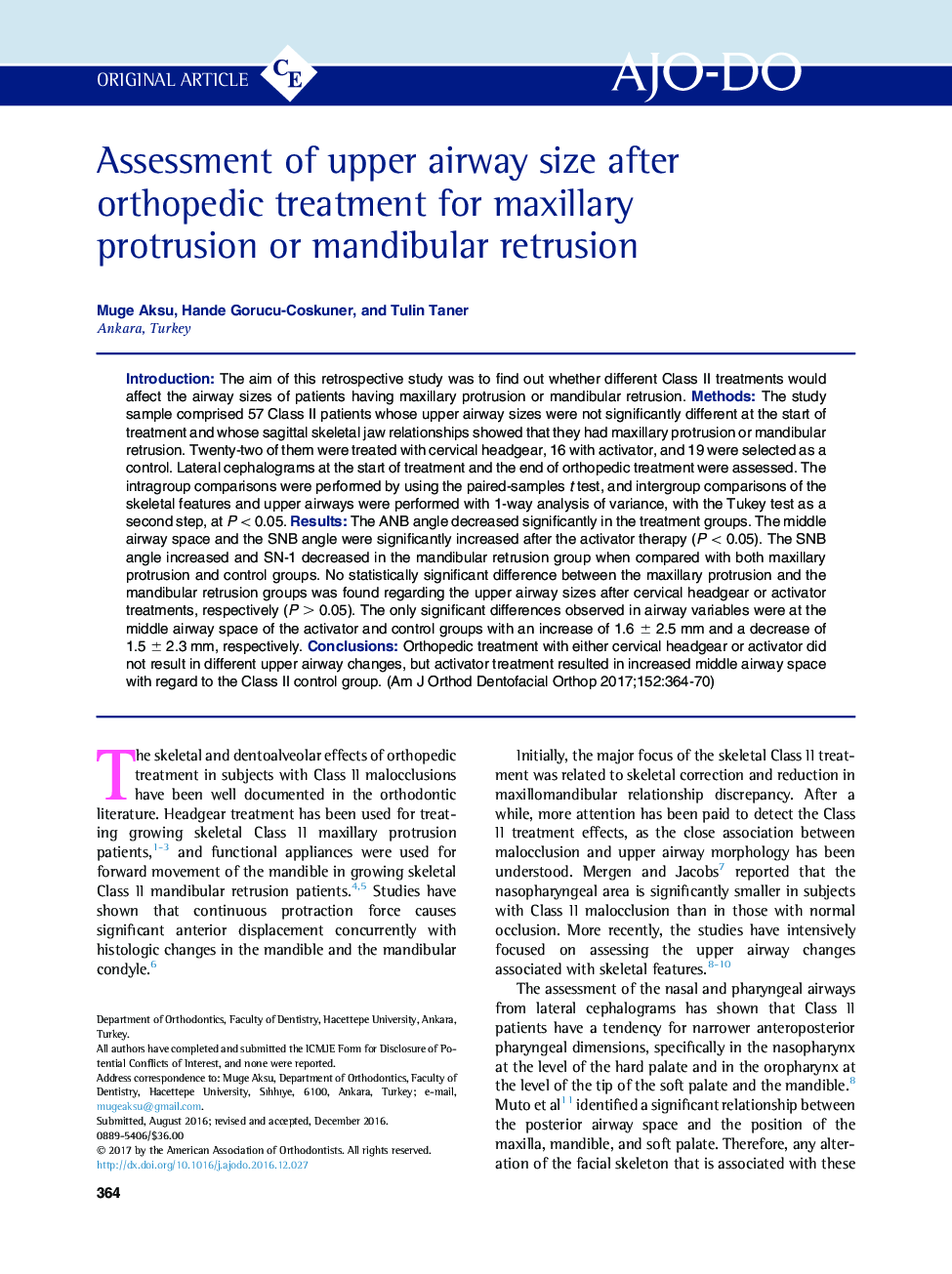| کد مقاله | کد نشریه | سال انتشار | مقاله انگلیسی | نسخه تمام متن |
|---|---|---|---|---|
| 5637453 | 1582660 | 2017 | 7 صفحه PDF | دانلود رایگان |
IntroductionThe aim of this retrospective study was to find out whether different Class II treatments would affect the airway sizes of patients having maxillary protrusion or mandibular retrusion.MethodsThe study sample comprised 57 Class II patients whose upper airway sizes were not significantly different at the start of treatment and whose sagittal skeletal jaw relationships showed that they had maxillary protrusion or mandibular retrusion. Twenty-two of them were treated with cervical headgear, 16 with activator, and 19 were selected as a control. Lateral cephalograms at the start of treatment and the end of orthopedic treatment were assessed. The intragroup comparisons were performed by using the paired-samples t test, and intergroup comparisons of the skeletal features and upper airways were performed with 1-way analysis of variance, with the Tukey test as a second step, at P < 0.05.ResultsThe ANB angle decreased significantly in the treatment groups. The middle airway space and the SNB angle were significantly increased after the activator therapy (P < 0.05). The SNB angle increased and SN-1 decreased in the mandibular retrusion group when compared with both maxillary protrusion and control groups. No statistically significant difference between the maxillary protrusion and the mandibular retrusion groups was found regarding the upper airway sizes after cervical headgear or activator treatments, respectively (P > 0.05). The only significant differences observed in airway variables were at the middle airway space of the activator and control groups with an increase of 1.6 ± 2.5 mm and a decrease of 1.5 ± 2.3 mm, respectively.ConclusionsOrthopedic treatment with either cervical headgear or activator did not result in different upper airway changes, but activator treatment resulted in increased middle airway space with regard to the Class II control group.
Journal: American Journal of Orthodontics and Dentofacial Orthopedics - Volume 152, Issue 3, September 2017, Pages 364-370
